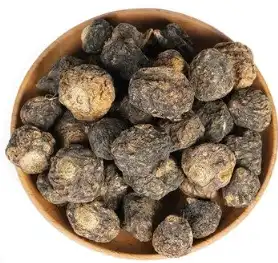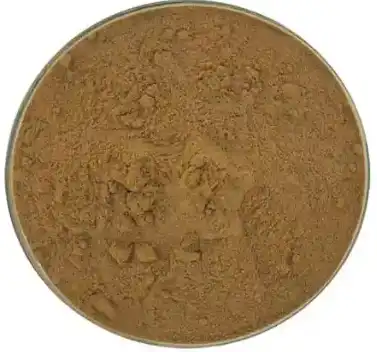Origins and History of Maca Root in Peru
The story of maca root begins high in the Andes Mountains of Peru, where this resilient plant has thrived for millennia. Growing at elevations of 13,000 to 15,000 feet above sea level, maca has adapted to survive in harsh conditions that would be inhospitable to most crops. This unique environment, characterized by extreme temperature fluctuations, intense sunlight, and strong winds, has contributed to maca's exceptional nutritional profile.
Archaeological evidence suggests that maca cultivation dates back to around 1600 BC. The Inca civilization, which flourished in the Andean region from the 13th to the 16th centuries, held maca in high regard. They considered it a valuable commodity, using it not only as a food source but also as a form of currency and a precious gift for royalty.
centuries, held maca in high regard. They considered it a valuable commodity, using it not only as a food source but also as a form of currency and a precious gift for royalty.
Traditionally, Peruvian natives used maca for various purposes. They believed it enhanced fertility, boosted energy and stamina, and improved overall health. Warriors would consume maca before battle to increase their strength and endurance. The root was also used medicinally to treat a range of ailments, from respiratory issues to rheumatic diseases.
The Maca Root Extract Powder we know today is a modern incarnation of this ancient superfood. The roots are harvested, dried, and ground into a fine powder, preserving the nutrients and making it easier to incorporate into various recipes and supplements. This process allows people worldwide to experience the benefits of this Andean treasure.
Comparing Maca Root and Ginseng: Similarities and Benefits
The nickname "Peruvian Ginseng" isn't arbitrary. While maca and ginseng are botanically unrelated, they share several characteristics that have led to this comparison. Understanding these similarities helps explain why maca has earned this esteemed title.
Both maca and ginseng are adaptogens, a class of herbs and plants that help the body adapt to stress and maintain balance. Adaptogens work by modulating the body's stress response, potentially improving resilience to physical, chemical, and biological stressors. This adaptogenic quality is one of the primary reasons maca is often compared to ginseng.
Energy and stamina enhancement is another area where maca and ginseng share common ground. Both have been traditionally used to combat fatigue and boost vitality. Athletes and fitness enthusiasts often turn to these natural energizers to improve their performance and endurance.
Maca and ginseng are also renowned for their potential to support cognitive function. Some studies suggest that both may help improve memory, focus, and overall mental clarity. This brain-boosting potential has made them popular among students, professionals, and anyone looking to enhance their cognitive abilities naturally.
In terms of sexual health, both maca and ginseng have been used to address issues related to libido and fertility. Maca Root Extract Powder is particularly noted for its potential to balance hormones and improve reproductive health in both men and women. Similarly, ginseng has been used in traditional medicine to treat sexual dysfunction and enhance reproductive wellness.
While the benefits of maca and ginseng overlap in many areas, it's important to note that they have distinct nutritional profiles and chemical compositions. Maca is rich in essential minerals like iron, calcium, and zinc, as well as amino acids and unique compounds called macamides. Ginseng, on the other hand, contains ginsenosides, which are believed to be responsible for many of its health-promoting effects.
Maca's Popularity and Nickname in the Superfood Market
The rise of maca in the global superfood market has been nothing short of meteoric. As health-conscious consumers seek out natural, nutrient-dense foods to support their wellbeing, maca has emerged as a star player. Its versatility and impressive nutritional profile have contributed to its widespread adoption in health food stores, smoothie bars, and kitchens around the world.
The nickname "Peruvian Ginseng" has played a significant role in maca's marketing and popularity. By drawing a parallel to the well-known and respected ginseng, this moniker has helped introduce maca to a broader audience. It provides a familiar reference point for consumers who may be unfamiliar with this Andean superfood, making it more approachable and relatable.
In the competitive superfood market, standing out is crucial. The "Peruvian Ginseng" nickname has given maca a unique identity, distinguishing it from other plant-based supplements and powders. This branding has helped position maca as a premium product, often commanding higher prices than other superfood powders.
The nickname also taps into the allure of traditional wisdom and exotic origins. Many consumers are drawn to natural remedies with a long history of use, particularly those from far-flung locations. The association with Peru and its ancient civilizations adds an element of mystique and authenticity to maca products.
As Maca Root Extract Powder has gained popularity, it has found its way into a wide array of products. From capsules and powders to energy bars and beverages, maca is now available in various forms to suit different preferences and lifestyles. This versatility has further cemented its place in the superfood pantheon and contributed to its widespread adoption.
The scientific community has also taken notice of maca's potential health benefits, leading to an increase in research studies. While more research is needed to fully understand and validate maca's effects, the growing body of scientific literature has lent credibility to some of the traditional uses of this Andean root.
Social media and influencer marketing have played a significant role in popularizing maca. Health and wellness influencers often tout the benefits of maca, sharing recipes and personal experiences with their followers. This word-of-mouth promotion has been instrumental in introducing maca to younger generations and expanding its reach beyond traditional health food circles.
As consumers become more interested in plant-based diets and natural health solutions, maca's star continues to rise. Its reputation as a nutrient-dense, adaptogenic superfood aligns perfectly with current health trends, ensuring its continued popularity in the wellness market.
Conclusion
The journey of maca from an ancient Andean staple to a globally recognized superfood is a testament to its remarkable properties and the power of effective marketing. The nickname "Peruvian Ginseng" has played a crucial role in this transformation, helping to introduce maca to a wider audience and solidify its place in the pantheon of revered natural health supplements.
While the comparison to ginseng has been invaluable in raising maca's profile, it's important to remember that maca is a unique superfood in its own right. Its rich nutritional profile, adaptogenic properties, and potential health benefits make it a valuable addition to any wellness routine.
As research continues to explore the full potential of maca, we can expect to learn even more about this remarkable root and its effects on human health. Whether you're looking to boost your energy, support your hormonal balance, or simply add more nutrient-dense foods to your diet, Maca Root Extract Powder offers a natural, time-tested solution.
Are you ready to experience the benefits of this Andean superfood for yourself? Angelbio, a leader in natural ingredient innovation, offers premium Maca Root Extract Powder that meets the highest quality standards. Our commitment to technology innovation and supply chain integration ensures that you receive a product that's not only potent and effective but also ethically sourced and sustainably produced. Whether you're a health-conscious individual, a fitness enthusiast, or a wellness professional looking to incorporate top-tier natural ingredients into your products, Angelbio has the solution for you. Elevate your health and wellness journey with our superior Maca Root Extract Powder. For more information or to place an order, please contact us at angel@angelbiology.com. Your path to optimal health and vitality starts here!
References
1. Johnson, S. (2021). "The Rise of Maca: From Andean Staple to Global Superfood"
2. Martinez, L. et al. (2020). "Comparative Analysis of Adaptogenic Herbs: Maca and Ginseng"
3. Chen, Y. (2019). "Traditional Uses and Modern Applications of Maca Root Extract"
4. Smith, A. and Brown, B. (2022). "Marketing Strategies in the Superfood Industry: The Case of Peruvian Ginseng"


